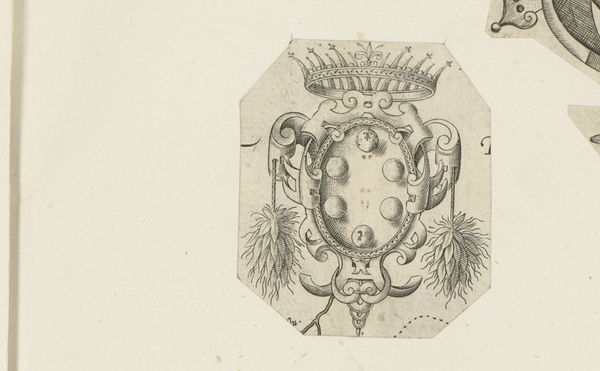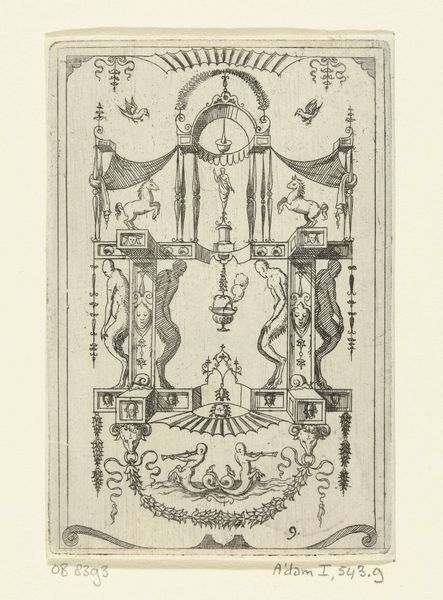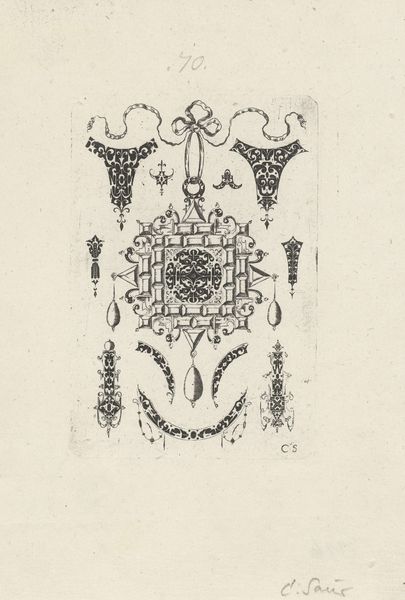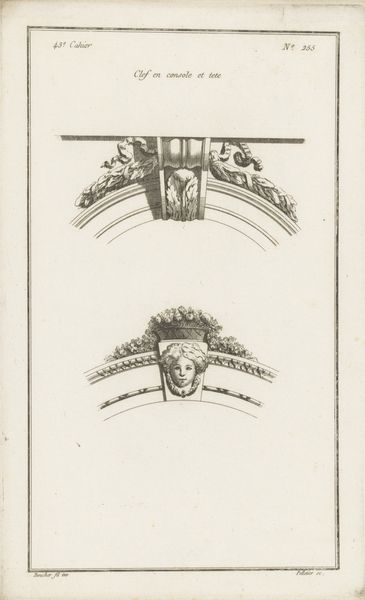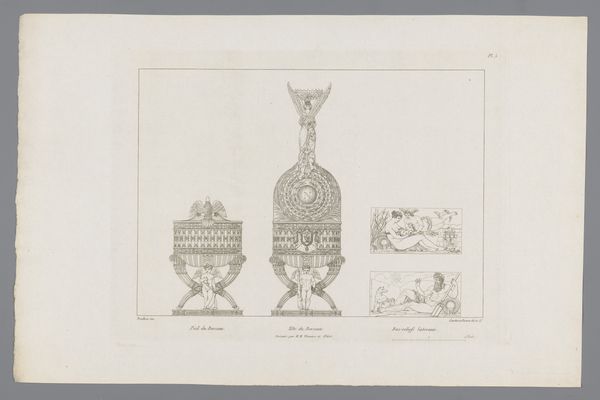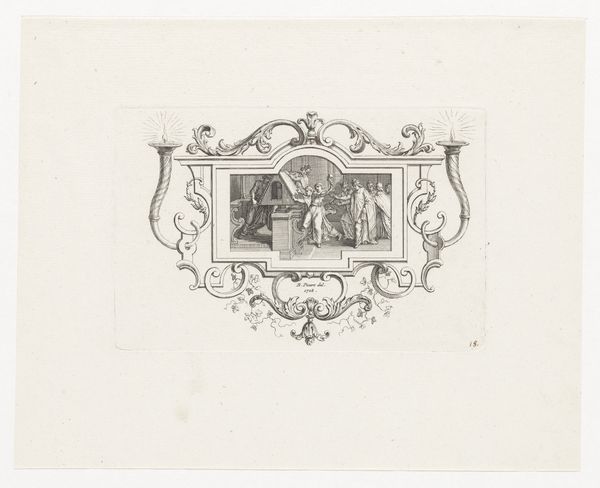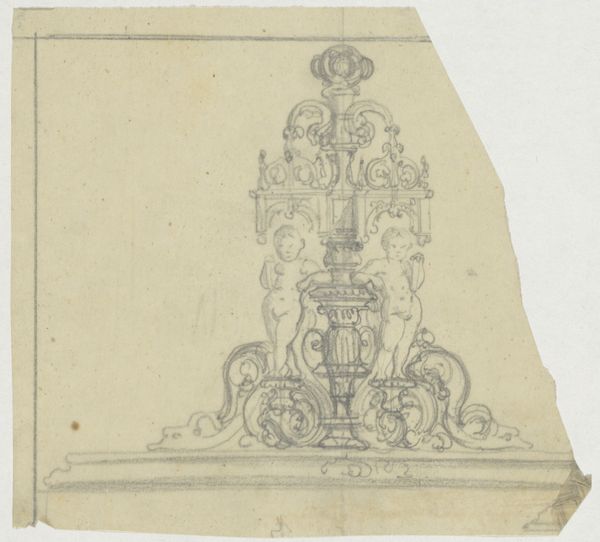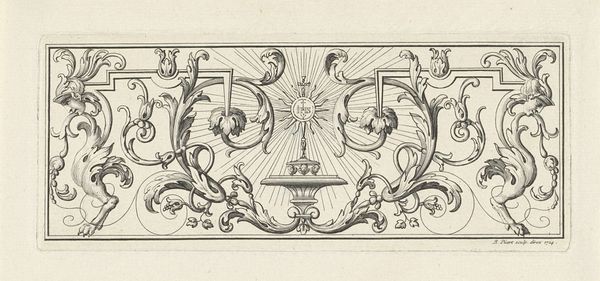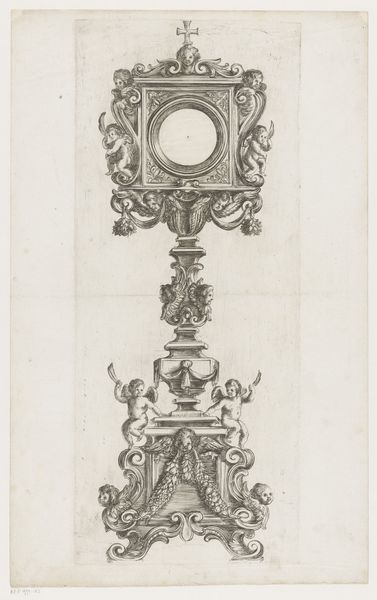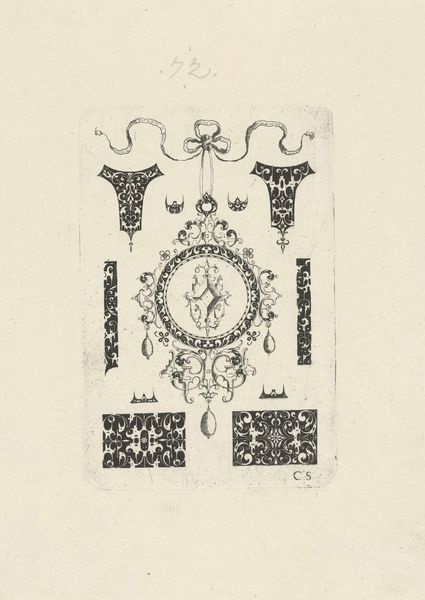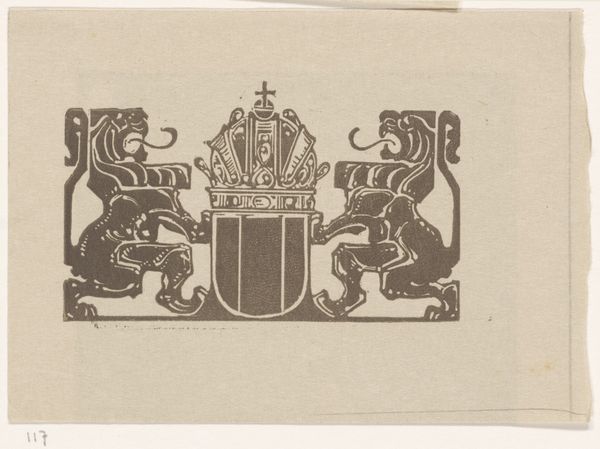
graphic-art, print, engraving
#
graphic-art
#
aged paper
#
toned paper
#
light pencil work
#
quirky sketch
# print
#
sketch book
#
11_renaissance
#
personal sketchbook
#
sketchwork
#
pen-ink sketch
#
sketchbook drawing
#
sketchbook art
#
engraving
Dimensions: height 90 mm, width 54 mm
Copyright: Rijks Museum: Open Domain
Abraham Hogenberg created this shield with the coat of arms of the Holy Roman Empire with engraving sometime between 1579 and 1656. At its heart, we see the double-headed eagle, a symbol of imperial power stretching back to antiquity, evoking the Roman Empire's might, adopted to signify the emperor's dual role as both a political and spiritual leader. The shield is crowned and surrounded by symbols of power and authority. Consider how this emblem echoes through history: the eagle, morphing from a Roman standard to the heraldic symbol of countless nations. The persistence of such imagery speaks to our collective fascination with power, with dominance, and with the projection of strength. It is a visual language that transcends time, each iteration subtly colored by the anxieties and aspirations of its age. The emotional weight of this image lies in its ability to evoke a sense of awe and submission, engaging viewers in a psychological dance of power and recognition. The symbolism is not static, but fluid, reflecting the ever-changing currents of history and the human psyche.
Comments
No comments
Be the first to comment and join the conversation on the ultimate creative platform.
